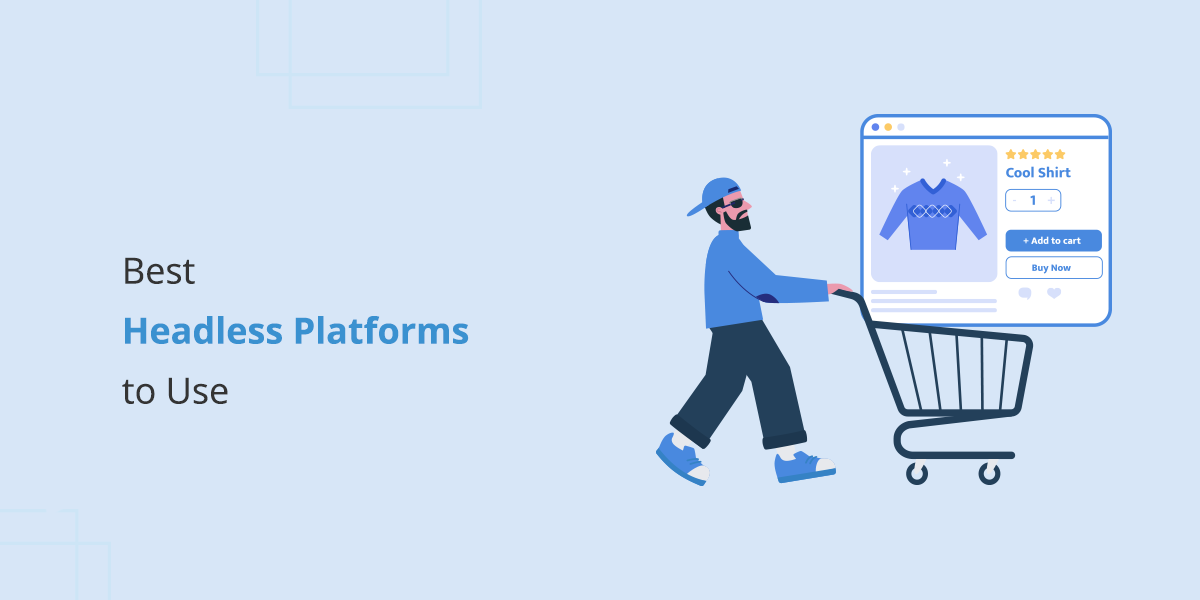eCommerce is experiencing a boom, and it is showing no signs of slowing down. According to Statista, the global eCommerce market will reach US$2,928.00bn in 2023. However, this also brings with it an increase in competition. A quick Google search for “phone cases iPhone 15” would fetch thousands of websites. The same applies to any other product you wish to purchase.
As an eCommerce store, every single one of these websites is a competitor. Therefore, there is a pressing need to seek innovative solutions that help eCommerce store owners stand out. Ask any top web development company or expert and they’ll agree that one of the best ways to differentiate your store and gain a competitive advantage is through headless eCommerce.
This article will first explain headless eCommerce and then explain the best platforms to use for this purpose.
What is Headless eCommerce?
To remain competitive in the eCommerce industry, it is imperative that your platform is adaptive and integrates the latest technologies or trends without any hassle.
You should be able to make changes to your front end without worrying about the back end. Otherwise, the pace of implementation would be considerably low, and you are bound to end up in issues. Similarly, if you wish to make changes to your back end, you need not worry about the impact on the front end. It sounds like wishful thinking but it is more than possible now.
This is where headless eCommerce comes in. It refers to a platform wherein the front end and back end are decoupled. It means that making changes on one end has no impact on the other. In traditional platforms, the front and back end are tightly coupled together. Any change in one area is bound to have an impact on the other.
Benefits of Headless eCommerce
Flexibility
The most notable benefit of headless eCommerce is the flexibility. Users can make changes quickly, thereby benefiting from adapting the latest trends and technologies. It also reduces reliance on web developers when making changes to the front end. Thus, it promotes the idea of citizen development, wherein non-technical users can customize the interface. Due to the high cost of expert developers, citizen development is indeed the future.
Customization
Headless eCommerce allows site owners to create personalized interfaces for different devices/users. This customization can greatly enhance the user experience and build brand loyalty.
Multichannel Support
Headless eCommerce allows store owners to target the market through multiple channels. It is crucial in today’s highly competitive market. Multichannel eCommerce greatly enhances your online visibility and reach. With the right strategies, you can benefit from an increase in leads.
Performance Improvements
As the front end operates independently, you can make several improvements on the front end, including improving the loading times and leveraging content delivery networks. Faster loading times and other enhancements can improve your rankings on the search engine results page and the user experience as well.
Integrations
Integrating with third-party apps becomes easier.
Future Proof
A headless architecture allows you to integrate the latest technologies, allowing you to stay ahead of the competition.
Security
By decoupling the front and back ends, overall security is improved. How? Headless architecture allows you to implement separate security measures for each layer. Even if one is compromised, the other remains secure.
Now, let’s focus on the top 5 headless eCommerce platforms.
Best Headless eCommerce Platforms 2024
The following platforms have been selected based on their popularity and functionality:
1. Shopify
A conversation on headless eCommerce is incomplete without mentioning Shopify. It is one of the world’s most widely used eCommerce platforms. Store owners can integrate their stores with different third-party applications to build the front-end. Once done, you can use the GraphQL Storefront API to connect the front and back ends. You can easily integrate with other platforms like eBay, Amazon, and Mailchimp.
2. BigCommerce
Next on the list is BigCommerce, another renowned player in the eCommerce platform market. This platform allows you to connect with widely used front-end frameworks such as Next.js, Gatsby, and Nuxt.js. It not only speeds up the development process but also allows store owners to benefit from their powerful capabilities. You can integrate it with WordPress. You can manage the content through WordPress and the rest of the platform through BigCommerce.
3. Magento 2
Although its name is now Adobe Commerce, it is still widely referred to as Magento. Unlike Shopify or BigCommerce, Magento 2 is high on customisations. You can personalize every aspect of your store to create a truly unique experience for your target audience. It also contains omnichannel solutions, allowing you to combine online and offline selling. The platform allows you to create custom integrations, meaning you can integrate with your marketing tools, content management system, and more.
4. SAP Commerce Cloud
SAP is a leading enterprise software provider. It has established a reputation for providing comprehensive enterprise solutions to some of the world’s biggest companies. Its eCommerce platform does not fall short in any aspect either. It is highly recommended for large eCommerce stores as it allows users to innovate at scale.
Irrespective of whether the store is B2B, B2C, or any other model, SAP Commerce Cloud is more than an ideal partner. This platform can be integrated with the entire SAP products family and numerous other tools, including Slack. These integrations enhance the functionality of an already powerful system.
5. Commercetools
Undoubtedly, the ability to integrate the best offerings from multiple vendors is the key to long-term success in the eCommerce industry. After all, every vendor does have limitations and by using multiple ones, you can overcome their individual shortcomings. This is precisely what commercetools has to offer. If a component is not working, simply replace it with a new one. The platform claims to accelerate the innovation process by up to 8x. New integrations are being added frequently.
Conclusion
This concludes our discussion on what is headless eCommerce and the top 5 headless eCommerce platforms in 2024. If you are contemplating shifting your existing store to headless architecture or want one developed from scratch, United Sol. can prove highly beneficial. With considerable expertise in eCommerce web development, we have the knowledge and experience to help you achieve your objectives. Contact us for more information.










